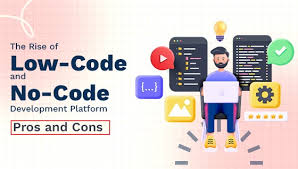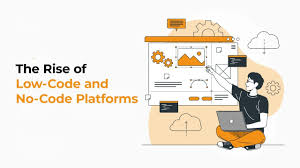
Building software and apps used to require deep coding knowledge and technical expertise. But by 2025, no-code tools have exploded in popularity, empowering non-developers to create websites, apps, and automated workflows without writing a single line of code.
This democratization of software development is changing how businesses innovate, speeding up projects and opening technology creation to everyone.
Let’s dive into the rise of no-code tools and what this means for the future of tech.
1. What Are No-Code Tools?
No-code platforms provide visual interfaces—like drag-and-drop editors and pre-built templates—that let users design and build applications quickly. They eliminate the need for traditional programming by:
- Abstracting complex code into easy-to-use components.
- Enabling integrations with other services via simple connectors.
- Allowing automation of business processes without developers.
This makes software creation accessible to non-technical users.
2. Why No-Code Is Taking Off
Several factors drive no-code adoption:
- Speed: Build prototypes and products in days or weeks instead of months.
- Cost-effectiveness: Reduce reliance on expensive developer resources.
- Flexibility: Quickly adjust apps based on feedback or changing needs.
- Empowerment: Enable business teams to solve their own problems directly.
No-code tools bridge the gap between ideas and execution efficiently.
3. Popular No-Code Platforms and Uses
No-code tools are flourishing across industries:
- Website builders like Webflow and Wix.
- App creators such as Bubble and Adalo.
- Automation tools like Zapier and Integromat.
- E-commerce platforms enabling quick store setups.
Businesses use no-code for internal tools, customer portals, marketing campaigns, and more.
4. Benefits for Businesses and Individuals
No-code platforms offer:
- Faster innovation cycles.
- Reduced IT bottlenecks.
- Greater collaboration between technical and non-technical teams.
- Opportunities for entrepreneurship without coding skills.
Individuals gain new avenues to bring their ideas to life.
5. Limitations and Considerations
No-code isn’t a perfect fit for every project:
- Complex or large-scale systems may still require traditional development.
- Customization can be limited compared to hand-coded solutions.
- Dependence on platform providers raises concerns about lock-in.
- Security and scalability require careful planning.
Understanding these factors ensures no-code is used effectively.
6. The Future of No-Code
No-code tools will continue evolving with:
- AI-powered assistants helping users build smarter apps.
- Integration with low-code platforms offering a hybrid approach.
- Expanded capabilities for data analytics, AI, and IoT applications.
- Wider adoption across enterprises and startups alike.
No-code is set to become a mainstream part of software development.
Final Thoughts
The rise of no-code tools is democratizing software creation, enabling non-developers to innovate faster and more independently. While not a replacement for all programming, no-code platforms are transforming how ideas become reality—and opening tech opportunities to a broader audience than ever before.
Whether you’re a business leader, entrepreneur, or hobbyist, no-code offers powerful ways to build the future without code.
